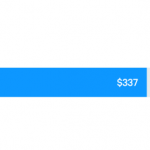Skimlinks can now ‘pre-target’ users down to a product category
The London-based company now offers segments of users interested in buying a given kind of product, even if they’ve only read about it and not clicked on a link to buy.

In late 2015, London-based affiliate marketing network Skimlinks announced a programmatic targeting service for advertisers called Audiences.
It is a data coop that pools anonymized data about online visitors’ purchase intents, which is then used by advertising platforms for ads or other targeting. Participating site publishers share the data coop’s revenue. Skimlinks says that its network covers 1.5 million websites, about 20,000 retailers and 1.1 billion shoppers.
When it was announced in November of 2015, Skimlinks said that the visitor data was divided into segments of 200 or so product categories, with indications about how soon the users in a given segment wanted to buy that product.
As it turns out, CEO and co-founder Alicia Navarro told me, those “product categories” were really about product-specific retailers and brands, not actual products.
Let’s say a user browses to a page on a participating publisher’s site. The publisher might have a review of new Sony cameras. Since Sony makes other kinds of electronic products, though, the “product category” might be consumer electronics. If the page was on, say, the site of a retailer that specializes in cameras, then the category might be cameras.
Navarro told me that her company’s machine learning had been generating some segments in categories that were actual products, like microwave ovens, but there were too few categories, with too little user data, to be useful.
Today, however, Skimlinks is announcing it can now generate actual product categories — such as “digital cameras” — at scale, creating about 900 product categories. They include electric irons, golf bags, humidifiers, microwave ovens and homeopathy.
Navarro said it took some time to train her company’s machine learning so that it could drill down to product levels, adding that the next goal is to drill down to actual product models.
‘Pre-targeting’
Skimlinks describes what it does in Audiences as providing data for “pre-targeting,” as opposed to “re-targeting.”
“Re-targeting solutions,” Navarro said a statement accompanying this new announcement, “show ads to people after they click to a retailer’s site,” or after they conduct a search.
Assume a 1 percent click-through rate on the product links in a product review. If the user then goes to a retailer’s page with that product and doesn’t buy, they might be “re-targeted” with an ad for that product when they go to another site.
But, she noted, that means that perhaps 99 percent of the people who went to that product review page and didn’t click on the product link — users who have at least some interest in that product — are “ignored by re-targeting.”
It is those users that Audiences “pre-targets” for their purchase intent because of editorial content, and it can now do that with a granularity down to a product category.
“Our segments allow marketers to target people who haven’t clicked on a product link,” Navarro told me, “but who have been reading about it.” Re-targeting, she noted, sends ads to users who have made a decision by clicking on a product purchase link, visiting a product purchase page or conducting a search for that product.
Skimlinks says that most data vendors analyze URLs visited to determine user interests, but that it also captures product links and related metadata — such as brand, product category and price — to determine that the page was about, say, microwave ovens.
Navarro noted that Amazon’s advertising solutions also pre-target ads based on a user’s visit to a page, but that is only for Amazon data. Skimlinks will include links to Amazon page in its assessment of a site’s pages, but it is primarily focused on publishers’ sites.
Marketing Land – Internet Marketing News, Strategies & Tips
(23)














